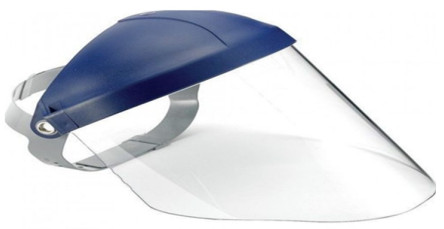1.
Introduction
Fractional differential equations (FDEs) are a type of differential equation that involve fractional derivatives, providing a more accurate description of various physical, biological, and engineering phenomena. These equations have gained significant attention in recent years due to their ability to model complex processes with memory and hereditary properties. Unlike classical integer-order differential equations, fractional derivatives are nonlocal operators, incorporating information from the entire history of a system.
To solve FDEs, a variety of numerical methods have been developed, adapted, and refined. These methods bridge the gap between the theoretical framework of FDEs and practical applications, making it possible to obtain numerical solutions for a wide range of problems. Some prominent numerical methods are used for solving FDEs [1]. The phi-4 equation is a wave equation given as
Many mathematician researchers have devoted their efforts to tackling the challenges posed by FDEs, employing various numerical methods to obtain precise and well-suited approximations. A selection of notable approaches stands out among the various methodologies that have been applied. Alquran, in their work [2], harnessed the Jacobi elliptic sine-cosine expansion method to address these equations, while Zahra presented the B-spline collocation method [3]. Bhrawy et al. [4] also proved valuable in this context. Further innovation has come from Alomari et al., who introduced the homotopy Sumudu approach [5], as well as Alquran's application of the modified residual power series method [6]. Additionally, Ehsani et al. [7] explored the homotopy perturbation method. Tariq and Akram investigated the tanh method [8]. Recently, the equation was solved by the Yang transform decomposition method, and the Yang homotopy perturbation transform method [9]. These methods, each with its unique characteristics, have made significant contributions to the expanding realm of knowledge surrounding the numerical solutions of FDEs. As researchers continue to refine and adapt these approaches, they push the boundaries of our comprehension of this vital mathematical domain.
Among the various techniques available, the homotopy analysis method (HAM) stands as one of the most prominent and versatile. It was first introduced by Liao [10,11,12]. HAM has found applications in solving a wide spectrum of differential equations and encompassing linear and nonlinear ones, including FDEs. For FDEs, scientists have ingeniously combined the coupled Laplace transform with HAM, resulting in a simplified algorithm tailored to this class of equations. This algorithm can be easily implemented using mathematical software such as Mathematica and Maple. Various problems have been solved via HAM such as time-fractional Korteweg-de Vries and Korteweg-de Vries-Burger's equations [13], fluid mechanic problems [14,15], blasius flow equation [16], coupled Lane-Emden-Fowler type equation [17] and the method investigated for finding multiple solutions to boundary value problems [18]. This fusion of mathematical techniques not only expands the realm of solvable problems in fractional calculus, but also provides powerful tools for researchers and practitioners across various scientific disciplines. Overall, HAM has various features among other analytic techniques, such as containing convergent control parameters, freedom to choose some starting solution, linear operator, and ease in deriving an explicit recursive formula for the series terms. Usually, HAM can give accurate results using a few terms of the solution. On the other hand, the analytic method needs to solve a linear problem in each term, so it needs powerful software and hardware to find the higher terms of the series.
In this paper, we applied the HAM for [2,3,5],
subject to the initial conditions u(x,0)=f(x),ut(x,0)=g(x), where CDα is the Caputo fractional derivative (Cfd) of order α (1<α≤2). Finding a convergent series solution for the fractional phi-4 equation with easy computational terms and analyzing these results in terms of accuracy and convergence will be a great effort in this field. By HAM implementation, a recursive formula for finding the series terms is derived. Also, we proved the convergence of series solutions and made a comparison with the previously published algorithm. The obtained numerical results via the HAM algorithm are more accurate than q-HAM, Yang transforms decomposition method, and Yang homotopy perturbation transform method (YHPM).
2.
Some ideas of fractional calculus
In this section, we provide fundamental definitions of the fractional calculus theory utilized in this paper.
Definition 2.1. We note the function
where k1(t)∈C(0,∞).
Definition 2.2. The Riemann-Liouville fractional operator of k∈Cμ,μ≥−1 of order α≥0 is [1],
We also require the following properties:
For k∈Cμ,μ≥−1, α,β≥0, and γ≥−1:
Definition 2.3. The Cfd of k, h∈Cm−1 is
where m−1<α<m,m∈N.
For m−1<α≤m, n∈N and k∈Cmμ, μ≥−1, then
3.
The HAM
Let's begin by introducing the fundamental principles of HAM. To illustrate the application of HAM in solving FDEs, we consider the following fractional differential equation:
CDαtv(x,t) is the Cfd of v. In our study, R and N represent the linear and nonlinear operators, respectively, with h serving as the source term. We apply HAM, as elaborated in [10,11,12], to define the nonlinear operator
where ψ is a real function q∈[0,1].
The zeroth order deformation [11,12] is
In this context, ℏ is a nonzero auxiliary parameter, H(x,t) is a nonzero auxiliary function that can be chosen as 1, v0 serves as the initial guess for v, and ψ represents an unknown function.
It is evident that ψ|q→0=v0(x,t) and ψ|q→1=v(x,t). To proceed, we expand ψ in a Taylor series
where
The m-th order deformation equation is
Thus,
where
Now, we define the nonlinear operator for (1.2) as:
The m-th order deformation equation can be derived by collecting the coefficients of the same power of qm,m=1,2,3,… in (3.3), which reads
where
So, the corresponding m-th order deformation equation is
subject to the initial conditions should be vm(x,0)=0,(vm)t(x,0)=0, where L−1 is the inverse operator, which can be chosen as L−1=Iα. It is worth mentioning that v(x,t) can be represented as a series
with,
by choosing v0 as
We solve the above Eq (3.10) to get the series terms of the solution:
The exact solution for α=2 is
4.
Convergence analysis
Theorem 4.1. If the solution series v(x,t)=∑∞i=0vi(x,t) converge, where vm is obtained by (3.10), then they must be solutions of (1.2).
Proof 4.2. Assume that ∑ni=0vi(x,t) converges, meaning limn⟶∞vn(x,t)=0. Referring to Eq (3.8), we deduce:
Here, L represents a linear operator. Given that ∑k⟶∞uk=0 converge implies that limn→∞un=0, and taking into account that H≠0 and ℏ≠0, this leads to the implication that ∑∞m=1Km=0. We can proceed by expanding N[ψ(x,t,q)] about q=0 and subsequently setting q=1
We can observe that v(x,t)=ψ(x,t,1)=∑∞n=0vn(x,t) satisfies (1.2).
Theorem 4.3. [5] Let the solution terms v0(x,t),v1(x,t),v2(x,t),... be defined as (3.5). The solution S=∑∞m=0vm(x,t), (3.11) converges if there exists 0<κ<1 such that ‖vm+1(x,t)‖≤κ‖vm(x,t)‖,∀m>m0, for some m0∈N.
5.
Numerical result and discussion
Figure 1 shows the 5-th order HAM solution and the absolute error. We can see from the figures that the HAM solution agreed with the exact solution presented in Figure 2. Now, we know that we can control the convergence of the series in the frame of HAM, for different values of ℏ. We plot the ℏ-curve of 10-th order HAM approximations of vt(0.1,0) for different values of α=2,1.9, and α=1.2 to determine the influence of ℏ on the convergence of the HAM solution in Figure 3. We can discover the valid region of ℏ where the curve is a horizontal line and is −1.15≤ℏ≤−0.85. The optimal value of ℏ can be determined by the residual error
The optimal value of ℏ is given by the minimization of Δ(ℏ) using the algebraic equation
The residual error R, and the 14-th HAM solution ˜v=∑14k)0vk(x,t) is represented in Figure 4,
for α=1.9,1.5, and α=1.2. In the following tables, we get the absolute error of the 5-th order HAM solution, with the exact solution in Table 1 corresponding to the optimal value of ℏ≃−0.968874. For comparing purposes, the absolute error of the HAM solution via q-HAM and Yang transforms decomposition method (YTDM) is presented in Table 2, and we ignore the YHPM since it has the same values of YTDM [9]. According to this table, HAM can give more accurate results than the other considered methods. In Table 3, we give 10-th order HAM approximation for α=2,1.9,1.5, and α=1.2, and the optimal values of ℏ corresponding are −0.968874,−0.958194,−0.868833, and −0.732442, respectively. Finally, to demonstrate the assumption of Theorem 4.3, we compute vi+1vi in the domain x∈(−5,5),t∈(0,1) in Table 4. It obtains that ||vi+1||∞≤κ||vi||∞ and κ<1.
6.
Conclusions
In conclusion, our application of HAM to the fractional phi-4 equation has yielded highly favorable results, as demonstrated in this work. This success underscores the effectiveness of HAM in addressing complex nonlinear equations with fractional derivatives. The method demonstrated its efficiency through its accurate numerical results compared to previous published results and applies to the convergence conditions of the series. Our findings contribute to the growing body of knowledge in this field and highlight the potential of HAM as a valuable tool for solving a wide range of mathematical and physical problems involving FDEs. Moreover, the method can also be accurate in finding convergent solutions to FDEs with multiple parameters and other definitions of fractional differential, and this could be in future work.
Use of AI tools declaration
The authors declare they have not used Artificial Intelligence (AI) tools in the creation of this article.
Conflict of interest
Prof. Clemente Cesarano is the Guest Editor of Special Issue "Numerical Methods for Special Functions" for AIMS Mathematics. Prof. Clemente Cesarano was not involved in the editorial review and the decision to publish this article.
This work does not have any conflicts of interest.










 DownLoad:
DownLoad:














